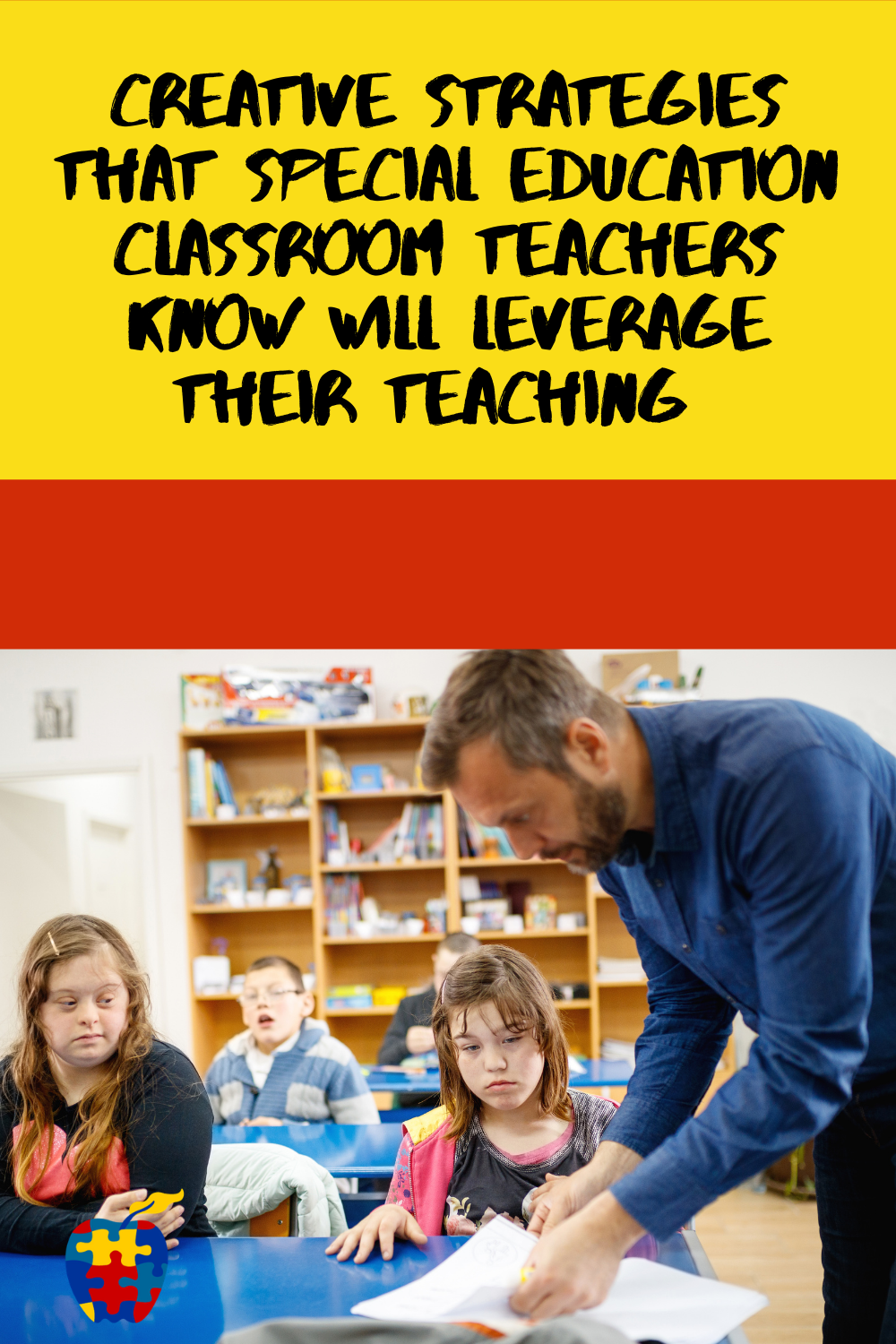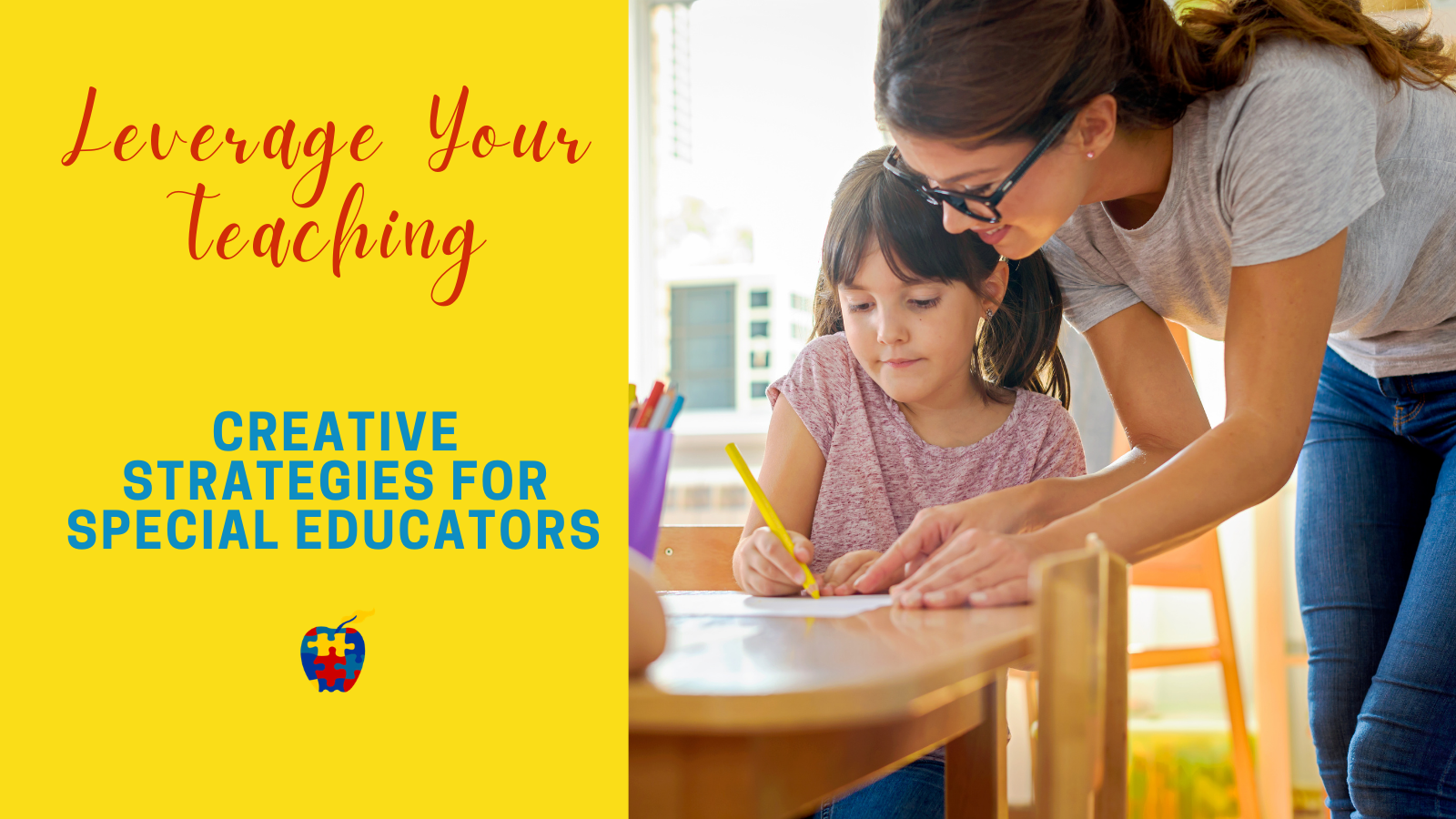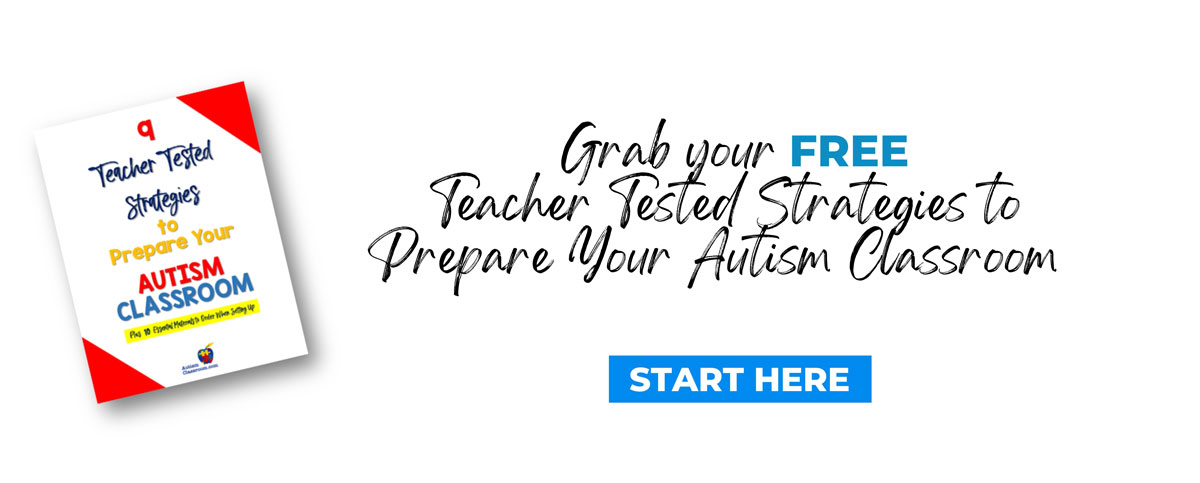Inside: Strategies for Special Education Teachers, working with paraprofessionals and reducing clutter.
This page includes affiliate links.

Self-contained classrooms are in place for a number of special needs students who need a highly individualized education. They allow the teacher and paraprofessionals to tailor the lesson content and utilize various teaching methods to best suit each student. If you have been wondering how to maximize your school with special education instruction and support that is above the norm, here are four creative strategies and tips to help you start!
Put a High Value on Consistency
One of the most important things a student with multiple disabilities needs is consistency. A routine helps students reduce anxiety and increase independence because there are few surprises. Students know what is happening and what they should be doing. A consistent structure eases their stress and gives them more of an opportunity to focus on learning the content. Of course, not every student is the same, so it's vital to develop programming based on each individual. However, having straightforward, classroom procedures is essential for every self-contained special education classroom. For example, having morning meetings or personal care activities that are the same each day, creates a structure that your students will follow and eventually learn to become more independent at doing. This may ultimately allow you greater flexibility in other teaching areas once other things become routine.
Call on the Strengths of Paraprofessionals
Paraprofessional support is the glue that helps to keep the classroom together. In some cases, especially if a teacher is new, the paraprofessionals know the students and the school better than the teacher. They are a wealth of knowledge about school related issues. They also might have established rapport with students if they have taught the student before or if they have communicated with them around the school in the past. Acknowledge and build on these strengths. Additionally, good teachers know to find out the hobbies and talents of the paraprofessionals in their classroom and allow them to let those talents shine. For some people this may look like running art class. For others, it may mean singing in morning meeting or collecting data. Whatever the strength, empowering your team members to use it will create a classroom environment based on mutual respect.
Reduce Overcrowded Spaces
Overcrowded spaces cause visual chaos and can leave some people feeling slightly claustrophobic. Everything should have a place in your classroom. Reduce any clutter or stimuli so your students can focus on learning the content instead of possibly feeling a sensory overload. When you utilize binders and cubbies to stay organized, your students will also learn where everything goes and this can increase their independence as well. They won't have to guess where things are or ask a teacher of paraprofessional for help finding something. And, it just feels good to show up to an organized space.
Use Sections of the Room to Your Advantage
It would help if you split your self-contained classroom into various sections, each with its designated activity and expectations. Use shelves and bookcases to divide the room up and create various zones. Teach your students to understand each area's requirements. They should know what behaviors and actions are expected of them when sitting in a specific area. This not only helps instill a routine and organization, but also helps redirect behavior. For example, most students know that their behavior on the playground is different than their behavior in an assembly. Using sections of the room is incredibly beneficial to learning. This is because you can place instructional materials and visual supports that are specific to that lesson in that area. The students may become more independent since they know exactly where to go and what they should be doing in that area.
Consistency, non-crowded spaces, and sectioning out the room are essential for any classroom but are especially critical for teachers looking to leverage their instruction in self-contained classes. Students with multiple disabilities, cognitive disabilities, emotional disabilities and behavioral needs thrive best in environments that reduce clutter, impose structure, and create opportunities for independence. Keep these tips in mind when you are setting up your own special education classroom!
3 Benefits of Learning in a Self-Contained Classroom
Top Tips for Self-Contained Classroom Teachers Interviewing in Special Needs Schools
Working with Consistency
Although this post is geared toward middle school, its tips on consistency are golden.
It is one thing to say be consistent, but this webpage gives specific ways to be consistent.
Links to Tips on Building Routine
Making a routine for students is a key factor in leveraging your teaching.
Information on teaching routines can be found here.
Books for Paraprofessionals
ParaProfessional Study Guide: ParaPro Assessment Exam Prep with Practice Test Questions
ParaProfessional Study Guide: ParaPro Assessment Study Book & Practice Test Questions
Paraprofessionals and Teachers Working Together 3rd Edition
Behavior Support Strategies for Education Paraprofessionals

Books and Workbooks Resources from Autism Classroom
The Morning Work Workbook: For K, 1st & 2nd Grade Students Learning Life Skills
Alphabet Trace and Reinforce Workbook


